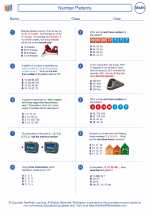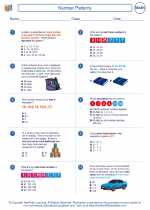Angles
An angle is a geometric figure formed by two rays that extend from the same point, called the vertex. Angles are measured in degrees, and they are used to measure the amount of rotation or turn between two rays.
Types of Angles
- Acute Angle: An angle whose measure is between 0 and 90 degrees.
- Right Angle: An angle whose measure is exactly 90 degrees.
- Obtuse Angle: An angle whose measure is between 90 and 180 degrees.
- Straight Angle: An angle whose measure is exactly 180 degrees.
- Reflex Angle: An angle whose measure is between 180 and 360 degrees.
Angle Measurement
Angles are measured in degrees, and a protractor is used to measure and draw angles. The symbol for degrees is °.
Angle Relationships
There are several important angle relationships to understand, including complementary angles (two angles that add up to 90 degrees), supplementary angles (two angles that add up to 180 degrees), and vertically opposite angles (pairs of angles formed by two intersecting lines).
Angle Properties
Angles have properties that affect their relationships with other angles and geometric figures, such as parallel lines, triangles, and polygons.
Practice Problems
1. What type of angle is formed when the measure is 45 degrees?
Answer: An acute angle.
2. If one angle measures 60 degrees, what is the measure of its complement?
Answer: The complement of a 60-degree angle is 30 degrees.
Study Tips
- Practice using a protractor to measure and draw angles.
- Understand the properties and relationships of angles in various geometric figures.
- Look for real-life examples of angles in the environment to reinforce understanding.
- Practice identifying and classifying angles in different contexts.
Understanding angles is essential for geometry and various other fields of mathematics and science. Mastering the concept of angles will provide a solid foundation for more advanced topics in the future.
.◂Math Worksheets and Study Guides Sixth Grade. Number Patterns

 Worksheet/Answer key
Worksheet/Answer key
 Worksheet/Answer key
Worksheet/Answer key
 Worksheet/Answer key
Worksheet/Answer key
